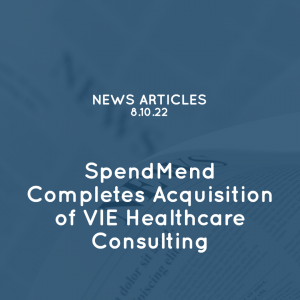Healthcare Revenue and Accounting
Important Terms and Definitions
The healthcare industry follows the Generally Accepted Accounting Principles (GAAP) to ensure proper accounting and financial management. Patient services such as medicines, nursing services, laboratory work, and surgery form a large portion of hospital revenue. However, the process of collecting payments can be complex as hospitals deal with a multilayer of healthcare payers such as the government and private insurers.
The current trend in the industry is adopting a value-based payment model which requires healthcare organizations to account for both the value and costs of their services. Overall, effective running of finance and revenue functions impacts the quality of care patients receive.
Healthcare Accounting Definitions
Accrual and Cash Accounting
Generally, the healthcare industry applies accrual and cash accounting to generate financial reports.
The accrual accounting method records revenues and expenses when they’re earned or incurred by a healthcare organization instead of when payment is received or made. This method impacts the reliability of the income statement and balance sheet. It’s commonly practiced compared to cash accounting because it provides a true picture of the actual profits. However, it can be an uphill task to track and account for transactions such as accounts receivables and payables, especially for a large hospital.
Cash accounting is easier to apply as it reports cash transactions. Revenue is recognized when cash is received and expenses are only recorded when cash is paid out. One major drawback of this accounting method is not showing the accurate financial health of a company. As a result, it’s not practical for hospitals as most transactions occur on an accrual basis.
Financial Accounting Standards Board (FASB)
Generally Accepted Accounting Principles (GAAP)
Financial Reporting
Health organizations are obligated to generate financial statements including cash flow statements, balance sheets, changes in net assets, and statements of operations. The recipients of these reports include shareholders, management, and the government. As for hospitals not liable to tax, they need to report their uncompensated community care benefits.
Payments and Receivables for Healthcare Services
Healthcare institutions have different payment methods which compensate for their services. One of them is per diem, in which a set fee is paid based on the number of days a patient has received services. The set fee is determined by the payer or through the Medicare Severity Diagnosis Related Groups (MS-DRGs).
There’s also value-based payment which considers the quality of care. This is in contrast to the fee-for-service payments which are received by hospitals based on an approved list of services. The Centers for Medicare and Medicaid Services oversees the value-based payment model. Types of value-based payments models include capitation, bundled payments, shared savings, and shared risk.
Payments and Receivables for Healthcare Services
Healthcare institutions have different payment methods which compensate for their services. One of them is per diem, in which a set fee is paid based on the number of days a patient has received services. The set fee is determined by the payer or through the Medicare Severity Diagnosis Related Groups (MS-DRGs).
There’s also value-based payment which considers the quality of care. This is in contrast to the fee-for-service payments which are received by hospitals based on an approved list of services. The Centers for Medicare and Medicaid Services oversees the value-based payment model. Types of value-based payments models include capitation, bundled payments, shared savings, and shared risk.
Payer Mixes
The payer mix of a hospital involves multiple sources of reimbursement for its services. These include out-of-pocket payments by patients, Medicare, Medicaid, and private insurance plans.
Since pricing can be complicated in hospitals, they rely on chargemasters to compute prices. A chargemaster is a list of prices of goods and services offered by the provider. It’s recommended that the payor mix from payers such as Medicare and Medicaid be lower while maintaining a higher payor mix for private insurance and self-pay. A payor mix is a portion of the revenue received by a healthcare provider from the payer.
Asset Depreciation
Credit Balances
Medical Insurance
Healthcare Revenue
Healthcare organizations sustain their operations by following a revenue cycle. According to the Healthcare Financial Management Association, the revenue cycle is, “all administrative and clinical functions that contribute to the capture, management, and collection of patient service revenue.”
It’s simply a process that tracks revenues from the moment the patient engages the healthcare provider to the point when payment is made for a specific service. A healthcare organization needs to manage its revenues so it can meet its expenditures, which can be substantial.
Operating Revenue
Operating revenue is income received by a hospital for services it provides. Healthcare organizations obtain income from both public and private sources. The three main payers of their service include Medicare and Medicaid, private insurance, and self-paying patients. Other forms of revenue include grants, donations, and the sale of assets.
Medicaid is a state and federal sponsored program that covers eligible low-income individuals and families. As of March 2020, 21.8% of all net hospital revenue was from Medicare, while 12.8 percent was from Medicaid. Medicare is a federal program targeting persons over 65 years, or those less than 65 years but with a disability.
Gross Vs. Net Revenue
Gross patient revenue is the total revenue received on billed services for the year. It’s commonplace in hospitals for their billing amount to exceed the reimbursement amount.
Net revenue is the total actual revenue of a health organization. This includes inpatient and outpatient revenue, specialty services, and other sources such as the cafeteria.
Operating Costs
Medical Claim
Charity Care
Operating Budget
Related Content
Caring and Preparing – A Challenge Unique to Healthcare
It is during times of crisis and disaster we realize what a gift it is to have a healthcare community like we do in the United States.
SpendMend Completes Acquisition of VIE Healthcare Consulting
The acquisition will help SpendMend to expand its set of solutions to help healthcare-industry clients reduce costs across purchased services agreements.
Reflecting on SpendMend’s Annual Company Meeting
We assist in identifying and recovering lost revenue through comprehensive audits, innovative software solutions, and expert consulting services.



